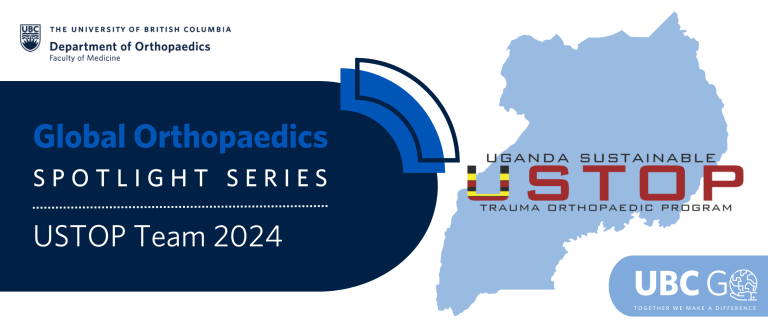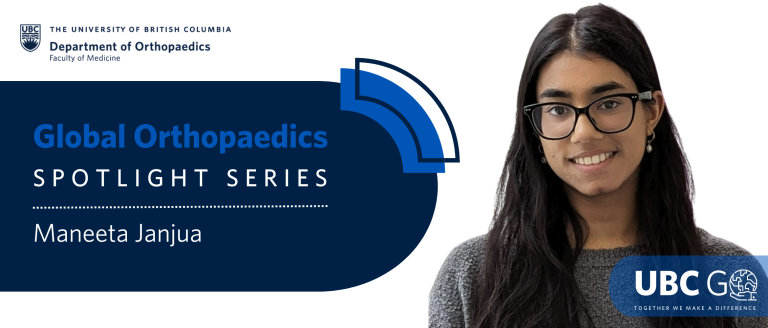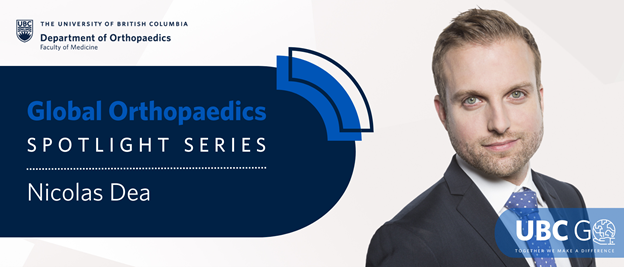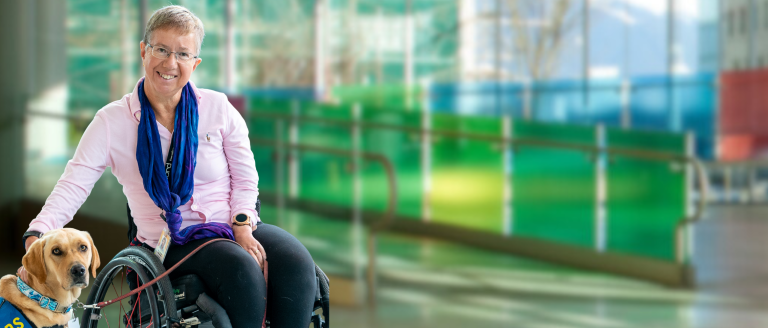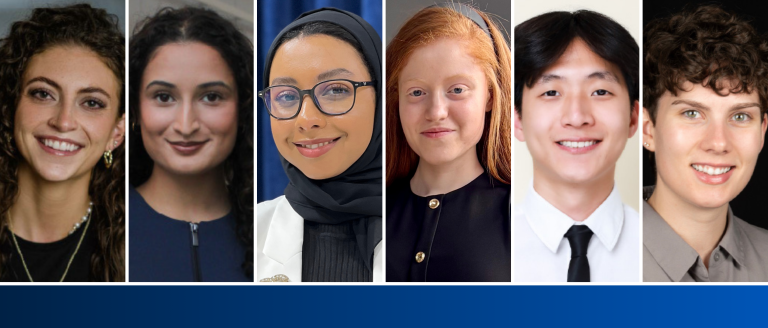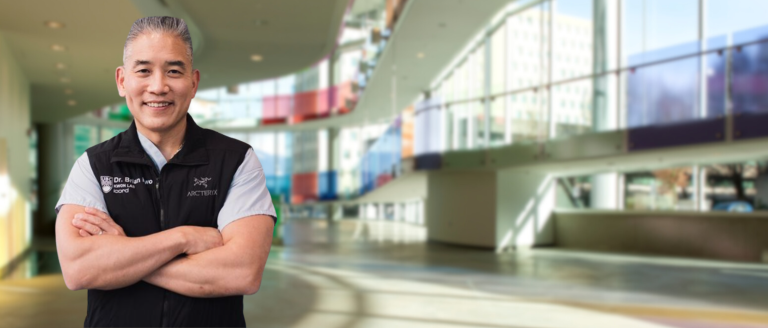Our UBC Global Orthopaedics (UBC GO) Spotlight series features in-depth conversations with a UBC Department of Orthopaedics member about their involvement in global orthopaedic initiatives. In this next spotlight, we learn about Clinical Associate Professor and Neurosurgeon, Dr. Scott Paquette.
Dr. Scott Paquette cultivated a profound interest in the field of global surgery and orthopedics through the inspiration of Drs. Peter Wing and Claire Weeks. His involvement in the SpiNepal project centered on the specialized domains of spinal cord injury rehabilitation in Kathmandu, Nepal. This undertaking not only contributed significantly to the establishment of the Spinal Injury Rehabilitation Center, but also played a pivotal role in facilitating the comprehensive training of local physicians, as well as continuous mentorship and support.
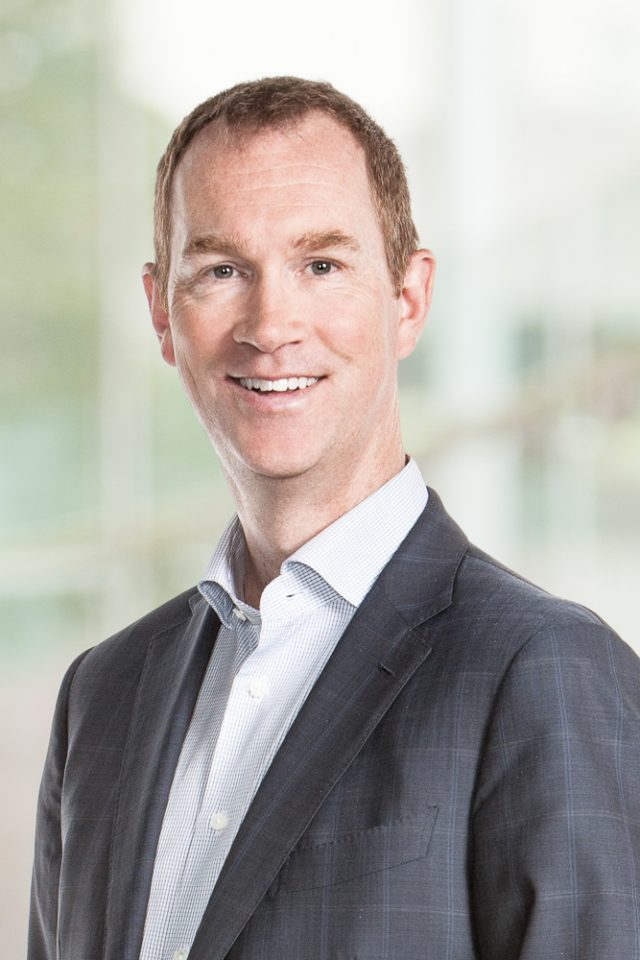
SCOTT PAQUETTE
Project/Initiative:
SpiNepal
What inspired your interest in global health/surgery/orthopaedics?
Drs. Peter Wing and Claire Weeks inspired me to get involved with global surgery. I worked with both of them on the SpiNepal project which they founded. It has been my only avenue in international work so far. Peter acted as a spine surgeon mentor as I got my practice set up, and his wife, Claire, was a spinal cord injury physiatrist. The International Spinal Cord Society (ISCoS) approached Peter and Claire about establishing a spinal cord injury rehab unit, and then helping a physician with their training in Kathmandu, Nepal. Peter asked if I would be interested in getting involved since he was on the verge of retiring and wanted some young blood to help him.
I’m not an orthopaedic surgeon, but a neurosurgeon. What I do is quite technology dependent. It’s generally hard to do complex spine surgeries in a low resource community. I need MRI’s, CT’s, operating rooms, and intensive care units, so the opportunities for me to get involved internationally are fairly limited. Peter Wing approaching me to get involved with SpiNepal was wonderful since it was the kind of opportunity I was always looking for.
What did you do?
The SpiNepal program supports a spinal cord injury hospital outside Kathmandu, Nepal that was started by Kanak Mani Dixit. Kanak, a journalist in Nepal, was injured years ago and suffered a spinal cord injury. As there was no option for him in Nepal, he went to the US for treatment. Upon his return home he raised the funds to build Spinal Injury Rehabilitation Center (SIRC), an equivalent of GF Strong, a spinal cord injury hospital. SIRC was initially relying on international physicians to staff the new rehabilitation center in Kathmandu. However, the real hope was to train personnel from Nepal who could stay there. From there came Dr. Raju Dhakal. Through support from funders such as Peter and Claire through the SpiNepal program, Raju went to Bangladesh to get training for becoming a physiatrist, the first in Nepal. He then took over as medical director at the new SIRC in Nepal. In conjunction with this, we thought a spinal neurosurgeon would be ideal to partner with Raju. This led to us identifying Dr. Prakash Paudel who also benefited from the funding support through SpiNepal. He trained as a neurosurgeon in Pakistan, worked in Nepal for a few years, and recently completed a fellowship in Canada.
We initially resisted bringing Prakash and Raju to Canada to train. We wanted them to learn in the resource environment which they’d be practicing. I think it’s a disservice to bring someone to Canada, the US, or Great Britain to show them the latest interoperative technologies such as CT scanners, commutated navigation, and data scanners which may not be feasible for someone working in Nepal.
Instead, raising money to have them first train at or near home, then getting established in practice, and afterwards having Raju and Prakash come here to present at conferences was a better route. Dr. Supriya Singh, who did her spine fellowship here with us at UBC, hosted Prakash for a fellowship in London, Ontario after he had been in practice for several years. So, at that point he had learned to function the best he could in his own environment, and only then came to London to pick up a few extra skills.
After Raju and Prakash had their practices established, there was a physiatrist from the US, Dr. Christine Groves, who helped Raju bring on another trainee. The cycle of training has thus continued again, now with a local Nepali physiatrist who is training the second Nepali physiatrist. It’s great to see that we got the ball moving, and now it’s rolling!
Where did you find the funding?
It was UBC Orthopaedics who helped our SpiNepal program get started. With their support, we were able to set up fundraising music shows and merchandise sales. Peter and Claire are masters at getting a network of people together. Well put-together emails and a website also helped as major sources of funding. We also relentlessly hounded our friends.
One thing we’re probing and looking into is sustainability. Do you think your projects were able to achieve sustainability?
If you want to influence change over time, you need to train people. It’s the old analogy of fishing for people versus teaching them to fish.
Through this ideology, we were able to create a sustainable program that wasn’t just a one-off. We didn’t send a tool, or textbook, and neither did we show up and do one or two operations in ways that no one else could reproduce or care for the complications. However, we helped Nepali physicians get established through funding for their training, as well as our ongoing work through mentorship and support.
While donating equipment always sounds appealing and like an easy solution, it isn’t the best way to support those in a developing country. I think sustainability is about supporting individuals, not just donating used equipment.
Looking back, what do you think were the key insights and main barriers that you faced?
Barriers:
- Working on a project that’s on the opposite side of the planet is not easy. It’s a 12/13-hour time difference depending on the time of year. However, technology has helped bridge everything. Through text and WhatsApp messages, “let me show you a case,” and sending pictures back and forth, there was always an interesting way to help with the training.
- Not knowing politics was also a challenge. We had to learn a lot about regional, hospital, and university politics in Kathmandu.
- After a few years of set up, Kathmandu had a horrible earthquake and SIRC was overrun with patients, creating a whole other challenge. We wanted to help but were unable to from a great distance. It was lucky that Prakash and Raju were well established by the time the earthquake hit.
Insights:
- We spent a long time implementing the SpiNepal project that is still going on to this day. It’s been rewarding to watch something grow, especially through our trips to Nepal. We found it eye-opening to see what provision of surgery was like in a developing country and to see the overlay of politics, international trade, influence of their regional neighbors, what it means for them as a nation and how Nepal provides care for citizens.
- When working on this project, it was important to have a clear vision for what our project will help with, how it can establish what is needed, as well as what can be sustained, maintained, and supported.
Are you working on any projects right now? What are your future plans/implications?
I’d love to find something similar to SpiNepal that I could get involved in, that’s why I’m looking forward to getting involved with UBC Global Orthopaedics.


